Hot Air Sundays
In the 1860s and 1870s, balloon mishaps were a weekly draw in San Francisco's Mission District.
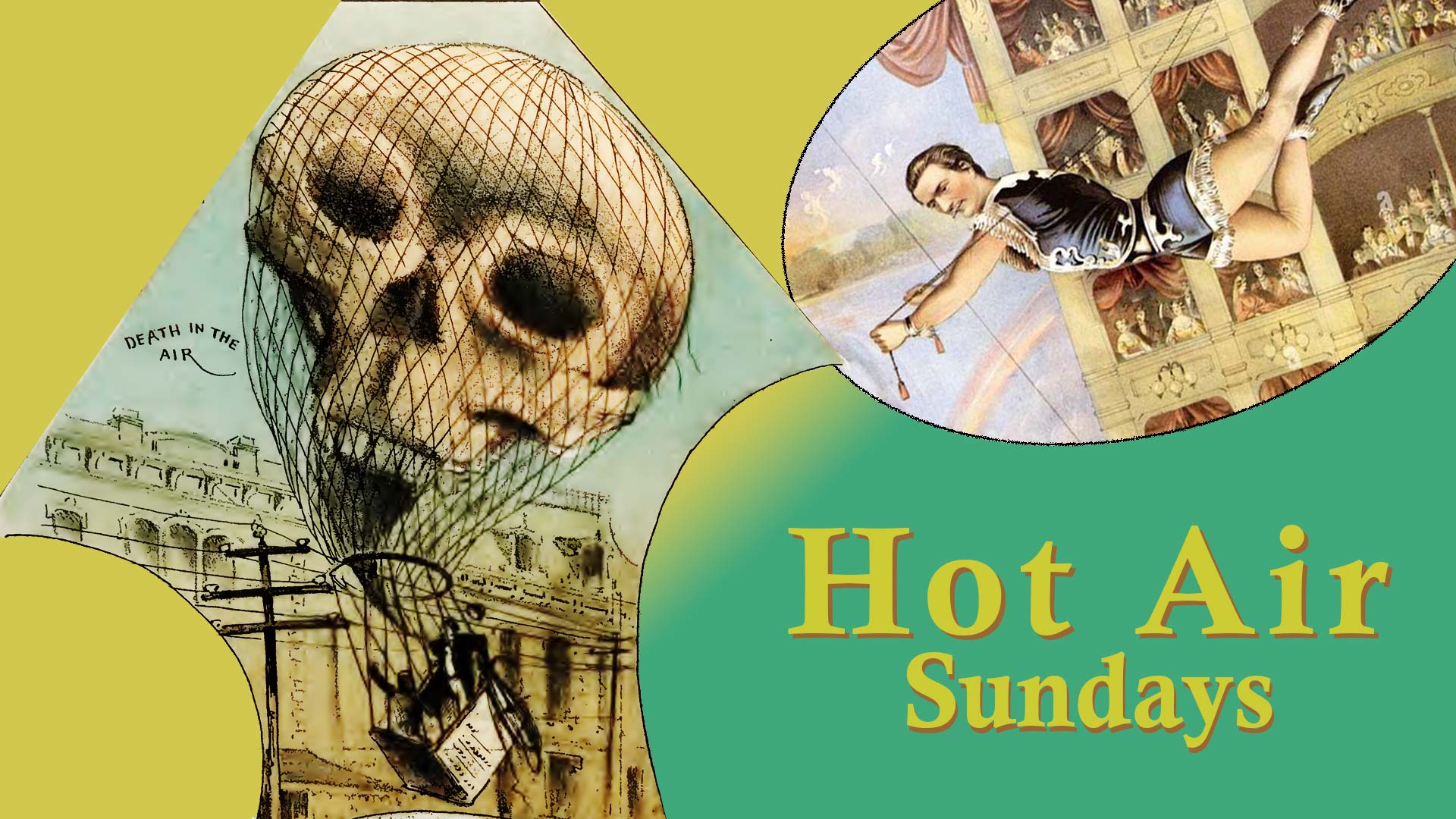
Sundays were the days for recreation in 19th century San Francisco. Competing “pleasure gardens” of the Mission District and Hayes Valley relied upon new acts and hyperbolic stunts to bring in the crowds on Sundays and few did better in the 1860s and 1870s than balloon ascensions.
Acrobats and decided amateurs with more bravery than aeronautical knowledge one-upped each other at the Willows (Mission and 18th streets), City Gardens (12th and Folsom streets), Hayes Park (Laguna and Hayes streets), and the celebrated Woodward’s Gardens at Valencia and 14th streets. (You can read more about the pleasure gardens in this San Francisco Story.)
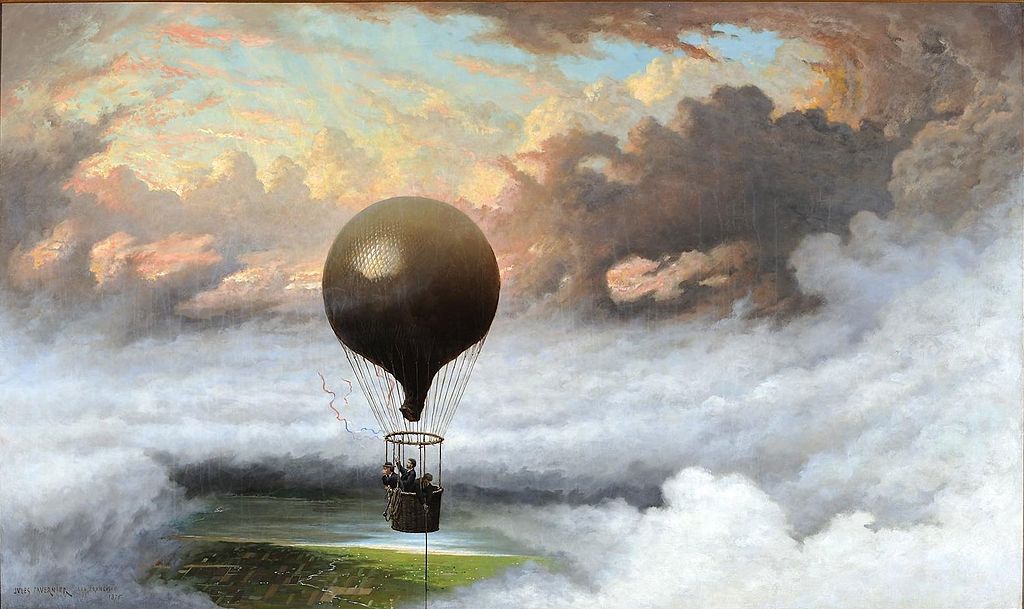
Blustery announcements and ads promised bigger balloons, longer times aloft, higher elevations, and larger and larger animals as passengers. Dogs, goats, and in one failed attempt, a horse, were all brought up in the air and—poor animals—dropped back to the ground by parachute.
The Buislays were the best-known local balloon adventurers, some related to each other and some opportunistically claiming a surname which was connected with daredevil trapeze acts. From the 1860s to the 1880s, Auguste Buislay, Etienne Buislay, Gruet Buislay, and Justin Buislay all worked in the city as pantomimes, acrobats, and tumblers. As mostly bumbling aeronauts they specialized in turns and twists hanging from a horizontal bar as much as 200 feet off terra firma.
That is, when their balloons actually got off the ground.
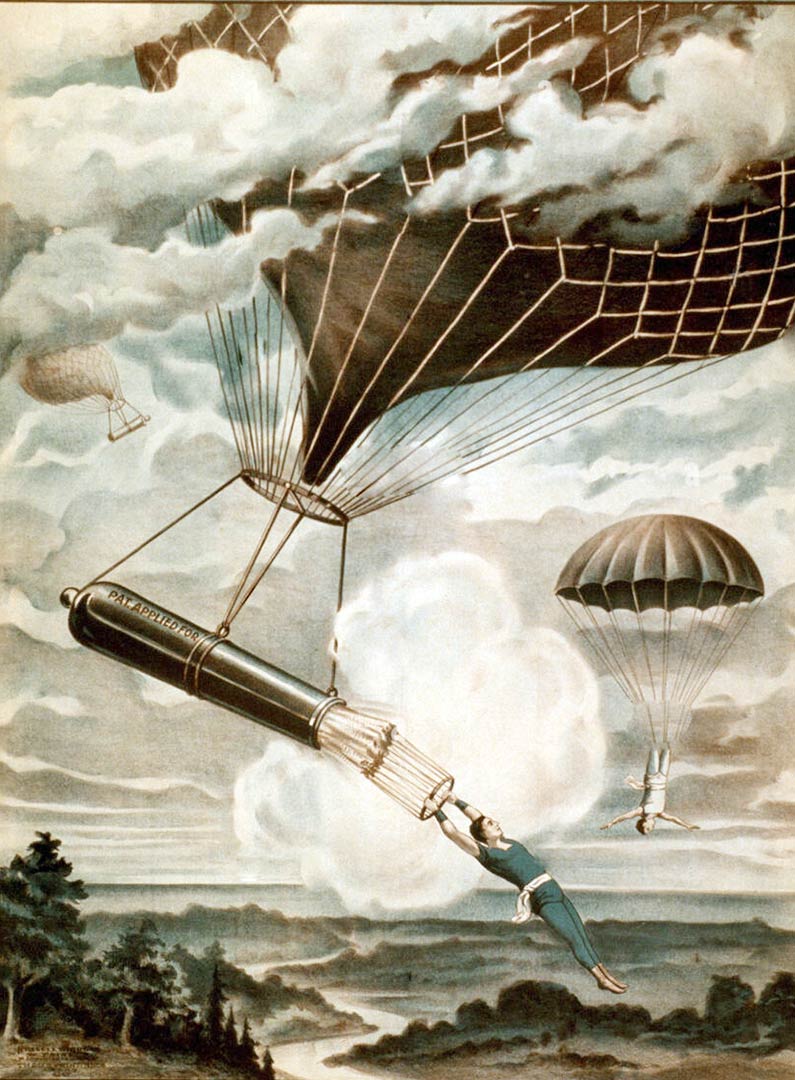
Usually there were troubles: the balloon didn’t inflate enough to rise; the balloon exploded while inflating; the balloon over-inflated and shot up before the rider could board it, caught a zephyr west, and was lost in the Pacific Ocean. One Buislay ascension from Hayes Park had the balloon and navigator quickly heading for Hawaii:
“A strong wind blew the balloon over the bay, outside the Golden Gate, between the Cliff House and the Light House. M. Buislay, seeing his danger, boldly cut himself and the board on which he stood free from the balloon, and fell like a cannon ball into the bay; rising to the surface, he supported himself by swimming and floating for over half an hour. He was picked up when nearly exhausted by a schooner bound for Acapulco.”
The same Buislay had more problems later in the month taking off from the Willows with a passenger:
“The balloon only ascended about 100 feet when it was drawn down by the heavy load. It alighted on the roof of the concert hall in the Willows enclosure, and the citizen got out. The balloon shot upward then, with Buislay hanging by his hands to the basket. He hung feet downward for a moment and then drew himself into the basket. The balloon only got up a short distance when it began again to descend. Ballast was thrown out; but to no avail. The balloon fell in the mud and collapsed, and the crowd of spectators started home.”
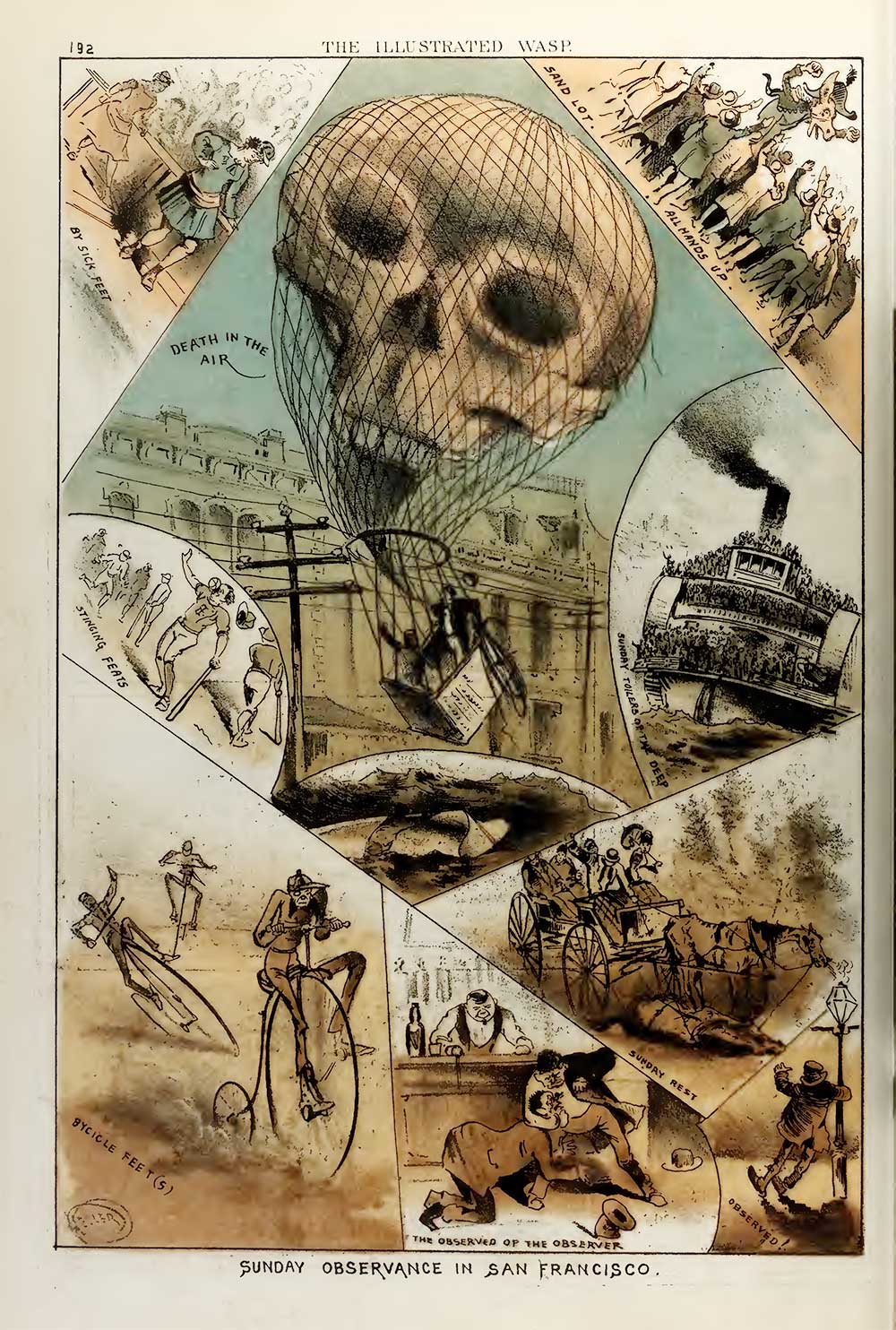
Balloon misadventures by Buislays became so common—two of them fell from trapezes the same week the balloon landed in the bay—a reporter joked (?) that a local theater promoter had gotten an appetite for disaster acts: “Maguire has offered a premium to any members of his company who will drift out to sea in a balloon or drop from a four-story window.”
The Buislays persevered in their art. On March 4, 1866, the Daily Alta reported August Buislay made “another narrow escape from death” when his balloon was carried by winds to the Potrero, where he was dragged before disengaging himself just as the balloon went into the bay. The following week, Buislay’s balloon went up about fifty feet before exploding. “[T]he former utterly destroyed, the later not hurt in the least.”
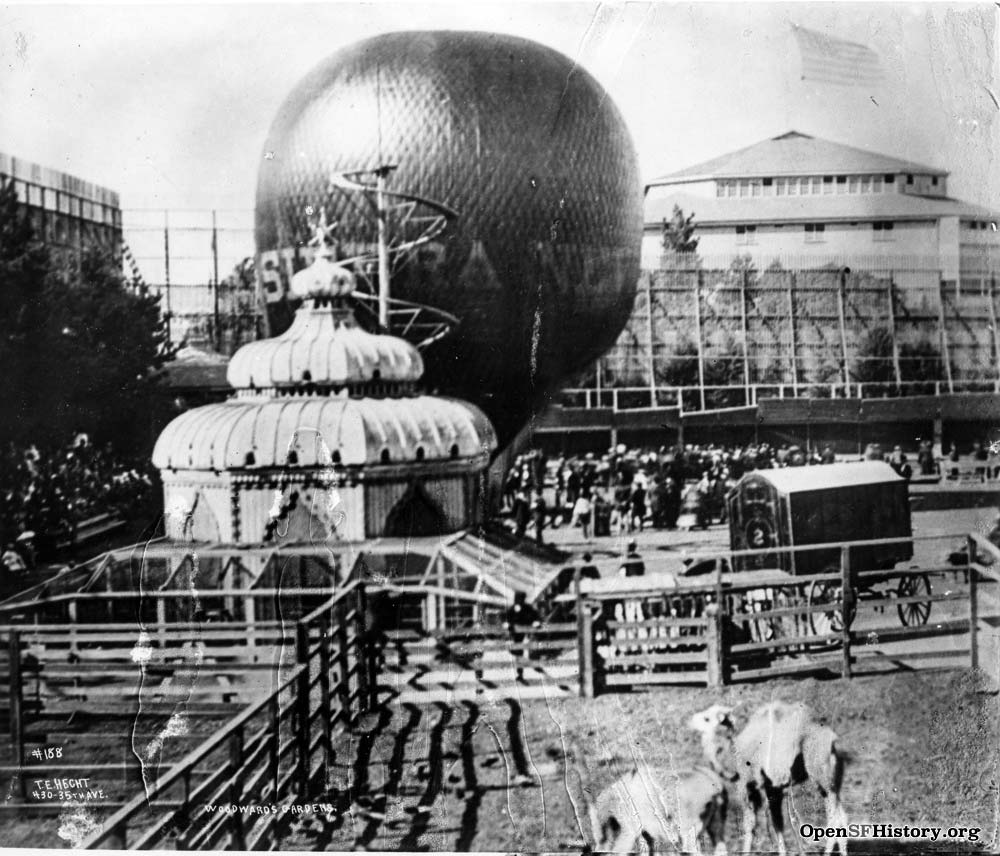
These ever-exploding or lost balloons had different names such as Le Geant (The Giant), Eureka, or Grand Republic. The Sierra Nevada shown above, had a few good ascensions in 1874. At first, the balloon is mentioned as belonging to a “Professor Allen” (such titles were often used to impart scientific credibility to the performers).
Allen tried to take off from Woodward’s Gardens in March 1874, but high winds pushed the balloon sideways as it began to rise. A number of men tried to rein it in, including proprietor Robert Woodward, who was lifted a good ten feet off the earth before he tumbled down without injury. All agreed to quit for the day.
The next month, Gruet Buislay, with five passengers, got the Sierra Nevada off the ground, but lost control of its flight path immediately. The balloon headed in the direction of Redwood City, then veered east. “[T]he crowd immediately began to disperse, awaiting with lively anticipation the freshest telegrams from the Alameda County Hospital.” A couple of hours later, all landed safely on the ranch of Howard Overacker in what is today Fremont, left to figure out a way to back across the bay with their giant deflated canvas and basket.
The last reference I could find of the Sierra Nevada was from July of 1874, when a Buislay ascended from Woodward’s Gardens with a reporter and another gentleman. The Sierra Nevada, spirited east by winds, headed for the foothills of its namesake mountain range, and the company eventually made landfall in a forest fifty miles northeast of Auburn. The men needed three days to get home. The San Francisco Examiner reported on their escape out of the wilderness. “When they left the balloon they had a small loaf of bread, and had lost most of their clothing swimming the streams.”
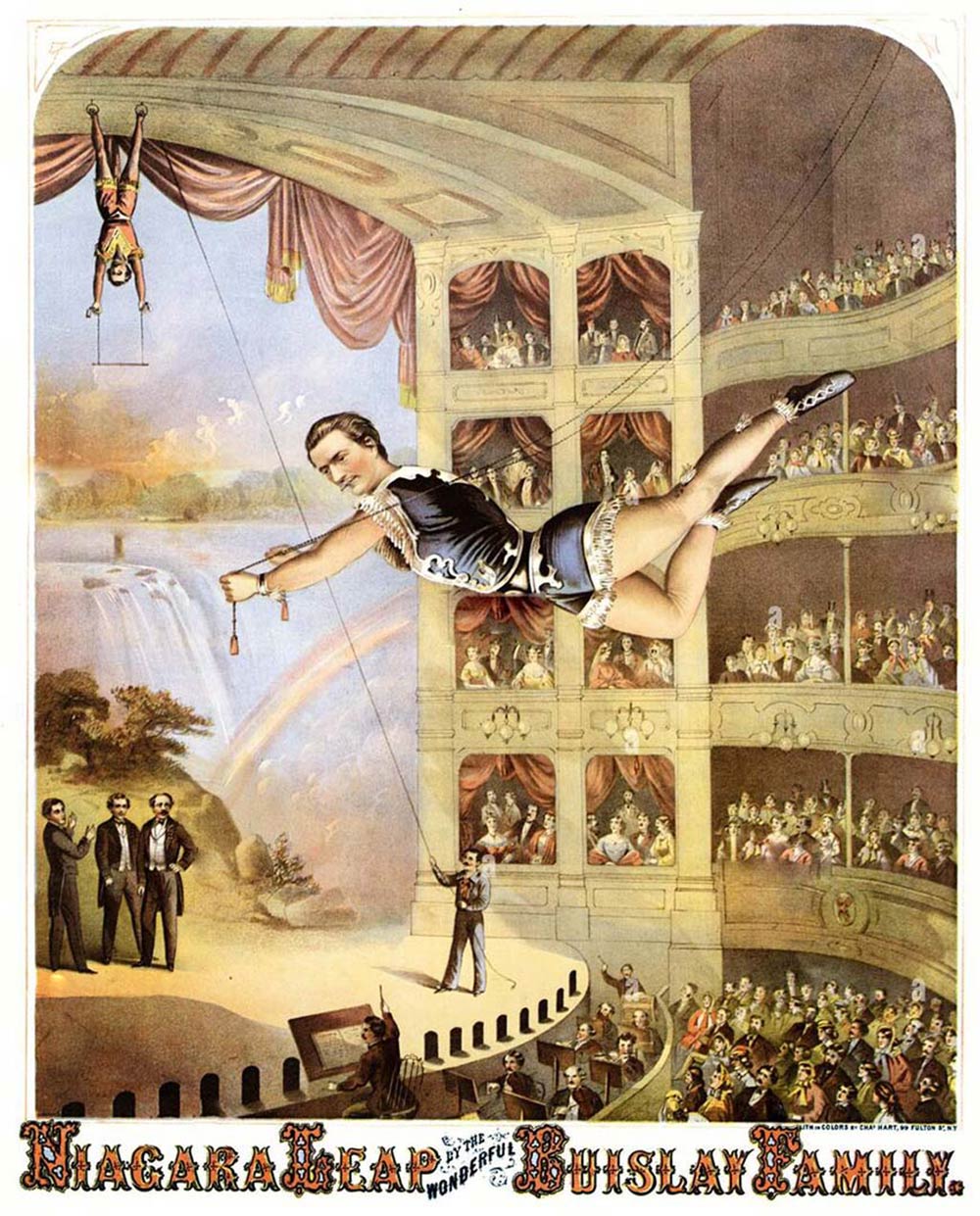
The heyday of the Mission District balloon ascensions ended when one of the Buislays finally got himself killed. On October 11, 1874, Jean Baptiste Gruet, who performed under the name of Gruet Buislay, took off from Woodward’s Garden at 4 p.m. He parachuted down his dog passenger successfully, but after being aloft for about a half hour the balloon was pulled by a stiff breeze to Bernal Heights. The aeronaut crashed into and was dragged across the hill’s rocky outcrop, then through a board fence, was pulled back up into the air, then dropped from more than 15 feet to the ground.
Two days later, Gruet was dead. The Chronicle claimed that “Although he had followed this perilous calling for twenty-five years, making in that time hundreds of ascensions, he never before met with an accident.”
Woody Beer and Coffee Fund

What is your pleasure? Coffee? Beer? White wine spritzer? Let me know when you are free and, thanks to the generosity of Woody Beverage Fund donors, we will sip, we will palaver, we may even bloviate...
Sources
“Amusements,” Daily Dramatic Chronicle, January 8, 1866, pg. 3.
“The Balloon Ascension,” Marysville Daily Appeal, January 31, 1866, pg. 2.
“The Balloon Affair,” Sacramento Daily Union, January 12, 1866, pg. 2.
“Narrow Escape,” Daily Alta California, March 5, 1866, pg. 1.
“The Willows,” San Francisco Chronicle, March 12, 1866, pg. 3.
“Cut Loose,” Daily Alta California, April 20, 1874, pg. 1.
“Back to Terra Firma,” San Francisco Examiner, July 17, 1874, pg. 3
“An Eventful Life Ended,” San Francisco Chronicle, October 14, 1874, pg. 3.
Walter J. Thompson, “Sunset Gold and Twilight Purple,” San Francisco Chronicle, December 10, 1916, pg. 28.

